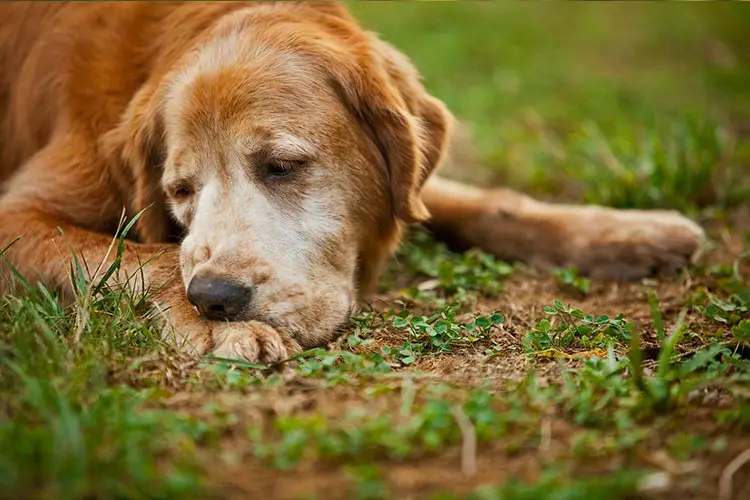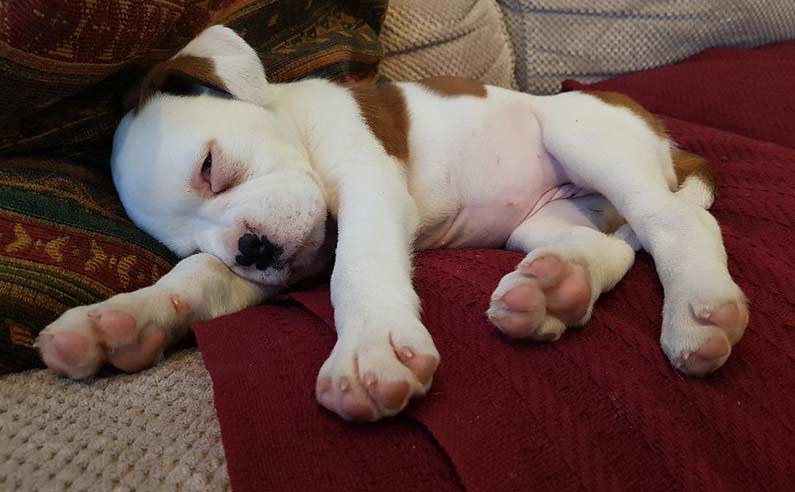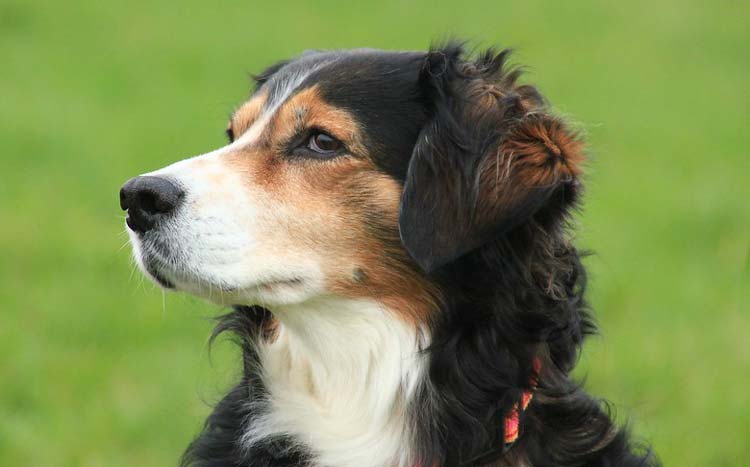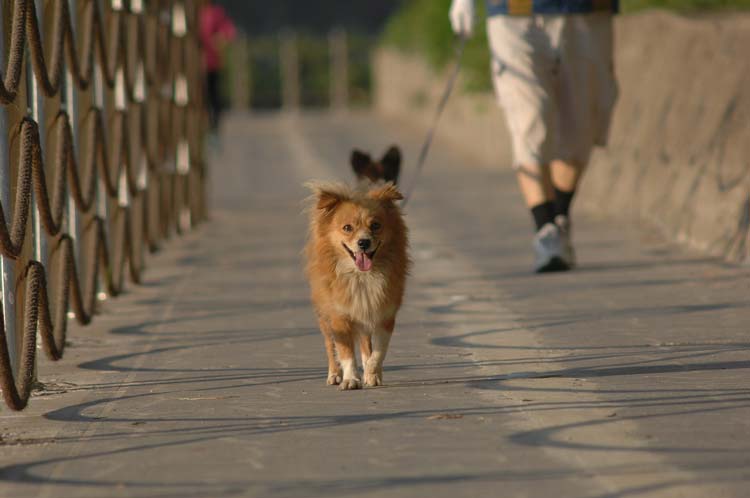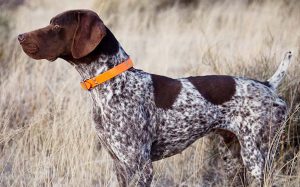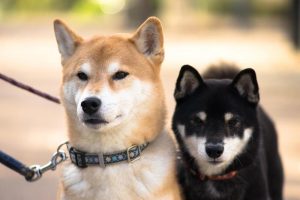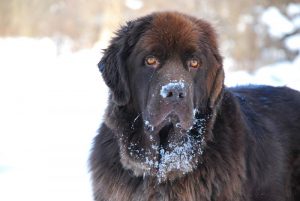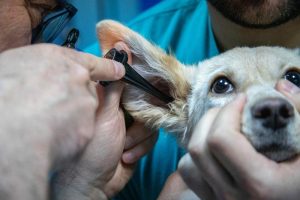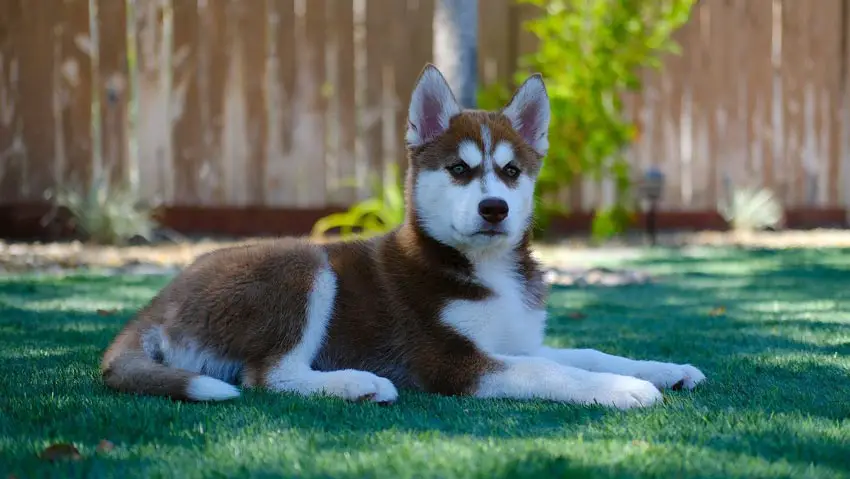
Before this active sled dog breed grows into a fine and healthy canine friend, the owner has to go through certain challenges while the puppy is still young.
So, how do you feed a Siberian Husky puppy? How much should they be fed per day and based on their age? Luckily, we have the answers for you in this informative article.
A Siberian Husky, like most famous working dog breeds, needs all the nutrition that they can get to properly function for their everyday tasks. From playing to training, your Siberian Husky pup will benefit from a well-planned diet coupled with the right nutrition for their needs.
See also:
Although it is apparent that a Siberian Husky puppy doesn’t like to eat much (they are commonly known for being picky eaters), it still pays to check their nutritional needs and train them to eat the right kind and amount of food while they are still young.
If you feed your Husky puppy with the right amount of food, it will benefit them in the long run. Eventually, it will ward off any kind of illnesses and extend their lifespan beyond what’s recommended for their breed.
Page Contents
How much to feed a Siberian husky puppy?
A Siberian Husky puppy should be fed at least 2 cups of food in a single day, which should be divided into 3 meals. Having 3 meals per day will help to not make them too bloated or too hungry in between meals.
Keep in mind that many factors could change the above-mentioned amount (which is only our general recommendation, after all). Age, hunger levels, physical activity, metabolism, and growth spurts can come into play, in which you can ask your vet for advice.
Aside from that, the amount of food per day and per serving will also vary depending on the food brand you choose for your Siberian Husky puppy and the ingredients of such pet food. You also have to consider if your puppy may have a history of food allergies and ask your vet or breeder about it.
Feeding Chart
Do you want to know how much to feed your Husky puppy depending on their age? Here’s a helpful chart that you can use as a guide, which we will expand further below the table:
| Life stage | Serving(s) | Type of food |
|---|---|---|
| Below 4 weeks old | Free feeding | Mother’s milk |
| 4 weeks old | Free feeding | Weaning food (1/4 puppy food and 3/4 water or liquid/canned food) |
| 5 to 6 weeks old | 3 to 4 times a day | Weaning food as mentioned above (but with more solid food) |
| 7 weeks old | 3 to 4 times a day | Weaned food with more solid food |
| 8 weeks old | 3 times a day 2 cups | Weaned food with more solid food |
| 9 to 10 weeks old | 3 times a day 2 to 2 1/2 cups | Puppy food (wet or dry) |
| 11 to 12 weeks old | 2 to 3 times a day | Puppy food (wet or dry) Treats |
Below 4 weeks old
Like all pets, your Siberian Husky puppy starts with its mother’s milk. Continue to let their mother nurse them until they turn 4 weeks old, which is the proper stage for the weaning or transition process. A Husky could also become more active during their third week.
4 weeks old
When your Siberian Husky pup turns 4 weeks old, you can start mixing puppy food and water in a 1:3 ratio. The puppy food should be wet or canned at first so that it is easier to digest for your Siberian Husky pup. Free feeding is encouraged during this time.
You might also find that the mother will still nurse the Husky puppy from time to time, which is okay. They may also help in the weaning process by gradually shying out of the puppy when they want to nurse.
5 to 6 weeks old
Keep training your Siberian Husky puppy with the weaning food until they get used to it. It should be offered about 3 to 4 times a day so that they will learn scheduled feeding at a young age. Keep in mind to take out food after 20 minutes of your pup not touching it.
A Siberian Husky puppy will learn to eat responsibly once you train them to only have food within 20 minutes. Spoiled food is also not good for your puppies, especially since you mixed puppy food with water, making it go bad quickly.
When your Siberian Husky puppy turns 6 weeks old, you can add more of the food and less of the water content to train them properly in transitioning to solid food. It’s okay if your puppy is still nursing from time to time by this period.
7 weeks old
Maintain the schedule for your Siberian Husky puppy at 3 to 4 servings per day and keep the daily intake to 2 cups per day. Remember to proportion it properly (you can use a measuring cup, just to be sure) to avoid compromising on your puppy’s nutrition.
During this period, your Siberian Husky pup might not nurse from their mother that much anymore so they will become more inclined to tasting and gobbling solid food, little by little. Nursing, if any, will usually be done by the mother while standing, as opposed to sitting, which will help in finishing the weaning process.
8 weeks old
If the Siberian Husky puppy is to be placed for adoption, this is the perfect time to separate them from the mother. If you are the breeder, you must tell the new owner about the brand of food that you used for your Siberian Husky puppies to avoid food allergies from compromising the puppy’s health.
If you are the new owner, don’t hesitate to ask about the brand of food that was used. If you can’t find that certain food in your locality or if it doesn’t fit your budget, you can transition to a new kind of puppy food that’s appropriate for their age.
The Siberian Husky puppy should be fed with any new food in transitions to avoid causing stomach upsets. If the puppy is being fed 4 times a day, you can simply reduce the amount to 3.
9 to 10 weeks old
Once your Siberian Husky pup reaches 9 weeks old, you can increase the intake to 2 1/2 cups per day, especially if their daily activities are plentiful and they like to run around even more. A Siberian Husky puppy that’s 9 weeks old is expected to be fully weaned and should be given food that’s appropriate for their age and breed.
Continue to give your Siberian Husky pup 3 meals a day and simply adjust between 2 and 2 1/2 cups for the daily serving depending on their hunger levels, metabolism, and your vet’s advice, if any.
11 to 12 weeks old
You might find your Siberian Husky pup chewing on your shoes during their 11th week. Their feeding schedule should be strictly observed during this time. If your Siberian Husky puppy has some begging habits, you may want to cut down on the treats to avoid obesity issues to appear.
If your Siberian Husky puppy is going through teething stages, you may want to feed them with more solid food to avoid toothaches. Continue feeding your Siberian Husky pup with 3 meals a day and simply reduce it to 2 by their adult stage.
Growth Chart
Are you curious about what is the recommended weight for your Siberian Husky puppy? Check out our charts below and you will find out if your pup is just the right weight for their age:
| Age in Months | Male Weight | Female Weight |
|---|---|---|
| 1 month | 5 lbs (2.3 kg) | 5 lbs (2 kg) |
| 2 months | 12 lbs (5.5 kg) | 11 lbs (5 kg) |
| 3 months | 21 lbs (9.5 kg) | 17 lbs (8 kg) |
| 4 months | 30 lbs (14 kg) | 25 lbs (11 kg) |
| 5 months | 36 lbs (16 kg) | 31 lbs (14 kg) |
| 6 months | 40 lbs (18 kg) | 35 lbs (16 kg) |
| 8 months | 47 lbs (21 kg) | 40 lbs (18 kg) |
| 10 months | 50 lbs (22 kg) | 43 lbs (19 kg) |
| 12 months | 51 lbs (23 kg) | 45 lbs (20 kg) |
| 24 months | 51 lbs (23 kg) | 45 lbs (20 kg) |
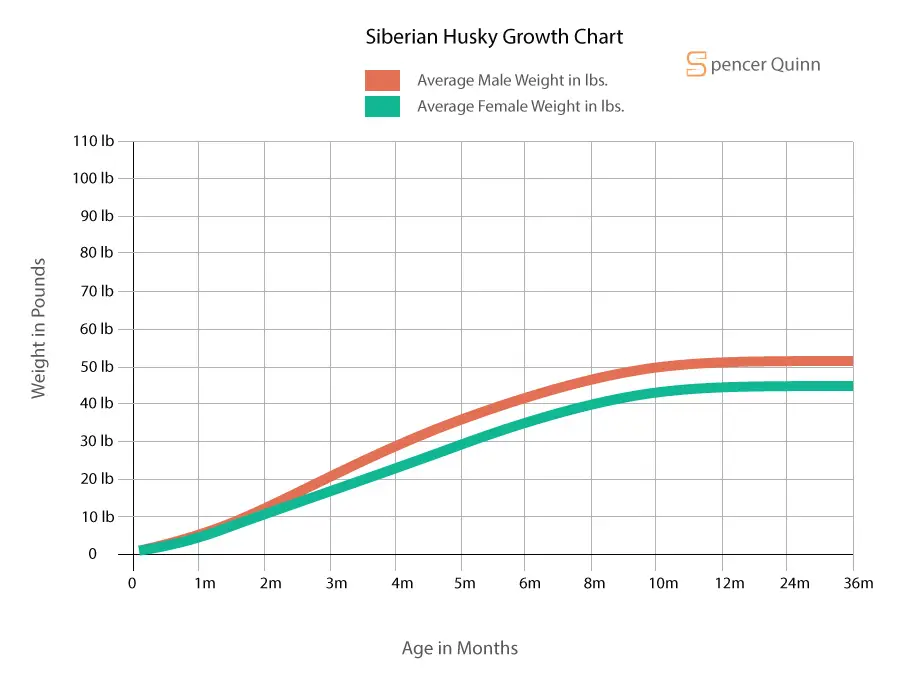
As you can see above, the growth of a Siberian Husky slows down during their 9th to 15th week. That’s normal since they are close to adulthood during that stage.
Recommended Food
There are different kinds of food that you can feed to your Siberian Husky puppy, such as the following:
1. Kibble or dry food
Kibble is the most abundant pet food in the world due to its ease of storage compared to wet food. Dry food or kibble is a healthy treat for your dog because it will help them to have stronger teeth, especially during their puppy stages.
Although pups may like wet or raw food more than kibble in terms of taste, flavorings, and juices, puppies will benefit more from a balanced meal that contains both kibble and canned or wet food. If your pup doesn’t do well with kibble, you can mix it with existing wet food or cooked meals at home.
Kibble quality is also important for pups that have sensitive tummies. If you suspect that your puppy has some allergies when introduced to any new food, you should choose your kibble brand properly. Most vets advise a no-filler formula that doesn’t have a lot of preservatives and artificial colorants.
We like to stick with an organic brand, despite the added price compared to standard grocery types, because they are healthier for your puppy in the long run. Kibble is also okay for Huskies that live in a multi-dog home or if you live in a place where food goes bad quickly (e.g. high humidity). Always consider high-protein kibble for your Husky puppy.
2. Raw and/or cooked food
Many Husky owners swear by raw feeding for their pets due to the Siberian Husky being quite similar to wolves. However, vets generally advise pet owners to be careful when feeding raw or home-cooked meals. This is so that your pet won’t lack certain nutrients.
While there’s a convenience in buying your puppy store-bought grocery pet food, you may also want to stay away from preservatives, additional flavorings, and whatnot that might be detrimental to your puppy’s health. Instead of commercial dog food alone, feeding them raw or home-cooked meals is a healthy choice.
Talk to your vet if you want to switch to a full raw or cooked feeding program instead of relying on the supermarket. Remember that since the Husky is an active breed, they might go well with a diet plan that’s rich in protein.
3. Wet food
Your Siberian Husky puppy might like wet food more than dry kibble because of its savory taste. However, mixing wet with dry food is more suitable for a Siberian Husky puppy due to the benefits of crunchy food for their dental health.
Wet food is appropriate for a Siberian Husky pup due to its formulation that’s closer to nature, much like with raw feeding. Aside from that, since wet food is more flavorful than dry or kibble food, you will find it easier to feed a picky Siberian Husky pup with canned food.
When you choose canned or wet food for your Siberian Husky puppy, however, make sure to include various other ingredients, such as vegetables and the like, to keep their nutrient intake balanced, much like if they were still in the wild.
Foods to Avoid
So, what should you not feed a Siberian Husky puppy? Here are some foods to avoid:
1. Chocolate
This is common sense to most pet owners, but giving your Husky chocolate is a big mistake as chocolate contains toxic chemicals that dogs and most pets can’t digest properly and may even cause fatal health issues.
2. Dairy products
Most puppies, especially pedigree breeds like the Husky, are lactose intolerant, so watch when you have dairy products lying around. Although you can feed them with milk replacer formulas to supplement their nursing stages, it should be advised by your vet.
3. Avocadoes
Did you know that avocadoes could make your Husky puppy have a tummy ache? That’s because avocadoes contain Persin, which is a toxin to dogs. There are other alternative fruits that you can feed your Husky instead, such as apples, bananas, and strawberries.
FAQs on Feeding a Siberian husky Puppy
Read on the FAQs below if you have further questions regarding feeding a Siberian Husky puppy:
How do I feed a picky Husky puppy?
Huskies are typically picky – especially puppies! If your suspect that you Husky is a troublesome picky eater, here’s what you can do:
- Add more flavors to their food. A Siberian Husky puppy might be a picky eater, but it doesn’t mean they won’t eat! Try adding more flavors to their food, but don’t overdo it! Husky puppies can benefit from a mix of wet and dry food (kibble is sprinkled on top). You can also serve them a couple of veggies, fruits, and raw or cooked meat.
- Consider dental problems as a cause. Sometimes, bad toothaches could cause your Siberian Husky puppy to become a picky eater. Try getting them inspected by your vet for any signs of dental problems. To prevent such an issue, regular brushing of their teeth and adding crunchy kibble to their daily diet can help strengthen both their teeth and gums.
- Make your Husky puppy feel relaxed. A Siberian Husky puppy could feel anxious if they just moved to a new home. They might lack appetite and that might appear as being a picky eater. Simply pamper your pet with toys and make them feel relaxed without any alarming noise. Leave them to eat undisturbed and they might eat in peace.
- Talk to your vet for advice. If you suspect that your Siberian Husky puppy isn’t feeling well and it’s conflicting with their appetite, talk to your vet right away. There might be an underlying health issue that’s causing your pup to become a picky eater.
Raw feeding a Siberian husky puppy
Raw feeding is a good option for Husky puppies since they naturally like (and were used to) raw diet in the wild. What a raw diet does is help your puppy gain a balanced meal without compromising on their taste.
Try experimenting with different food combinations to suit your puppy’s tastes, as long as you don’t leave behind any important nutrients as advised by your vet. You also need to handle raw food responsibly to avoid salmonella and the like.
Slow-feeding a Siberian husky puppy
Although we believe that Huskies don’t gobble their food too often compared with other breeds, if you see your Siberian Husky eat too fast, you’ll need a slow feeder. This helps not only to keep them in tip-top shape but also encourages them to use their brains and enhance their paw-eye coordination.
When your Husky puppy learns to “work for their food”, they’ll less likely become obese and they will also get entertained. Try using a slow feeder or puzzle toy for food and see what happens!
